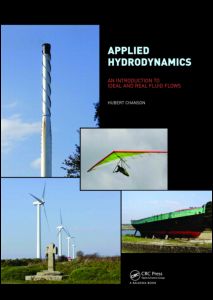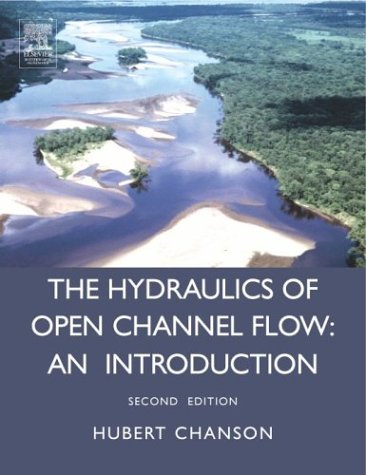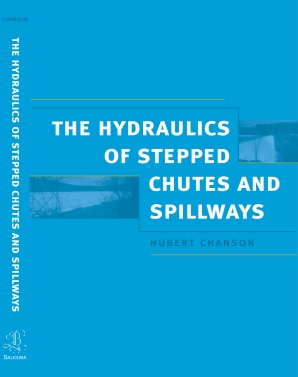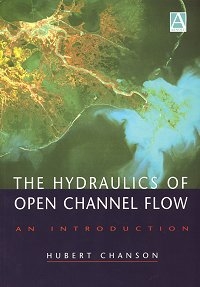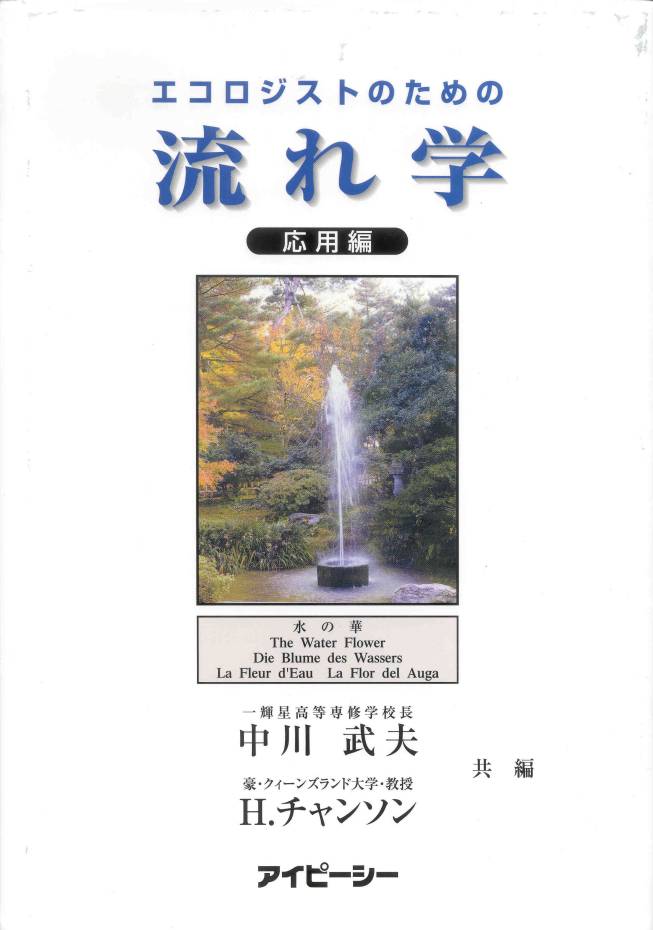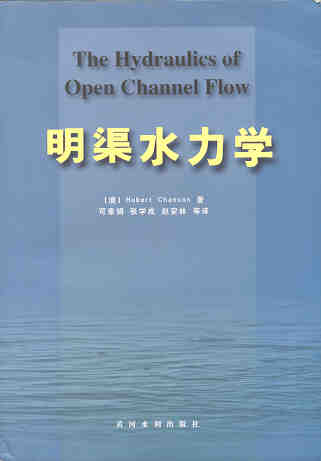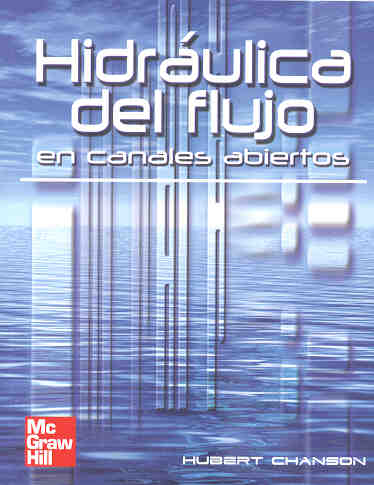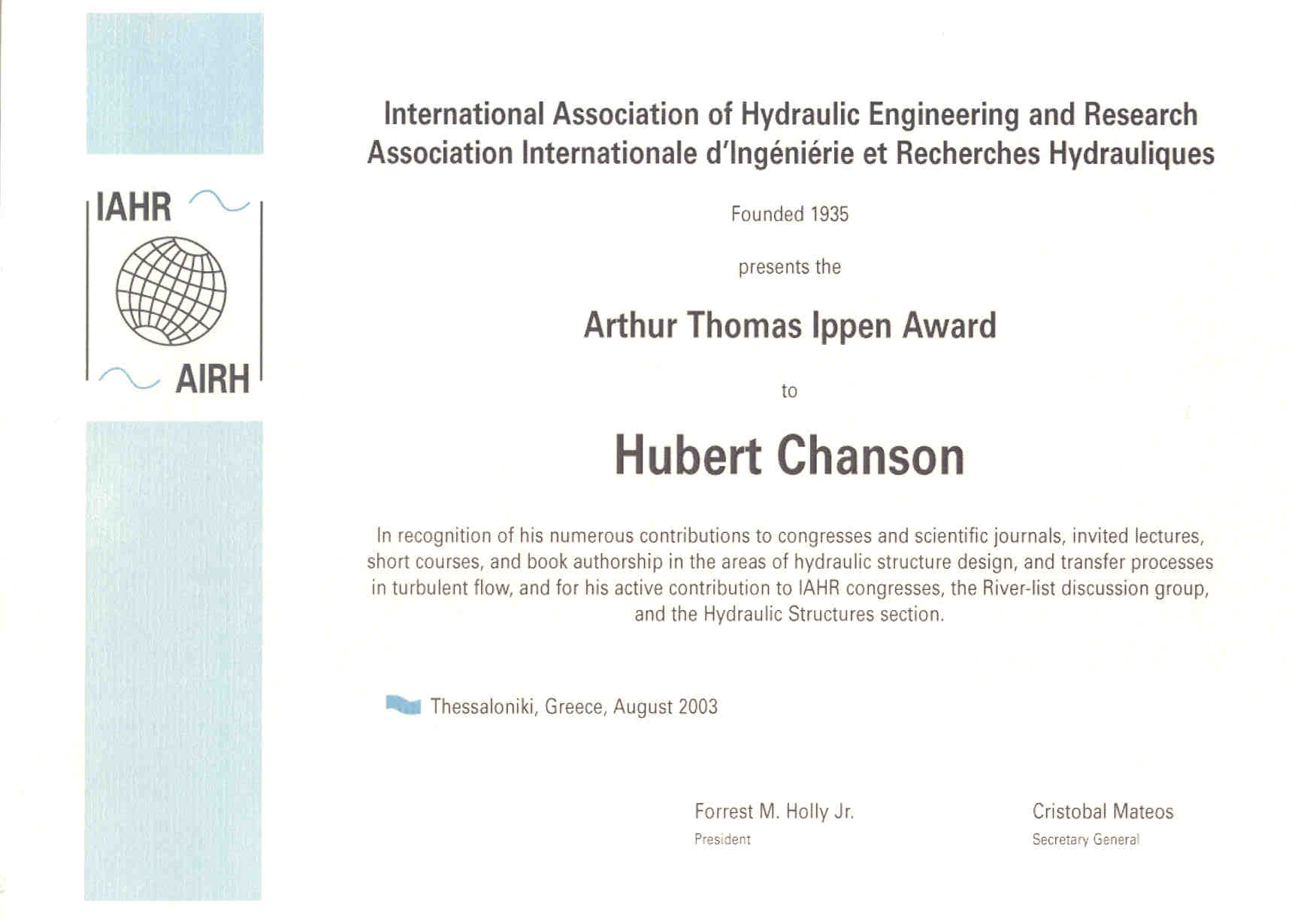Australian engineers has had a long experience of stepped spillway
design.
The earliest (large) stepped cascade, built in Australia, is the
Eastern
spillway of the Malmsbury dam completed in 1870 (CHANSON
1997). The Malmsbury cascade , built of crib and masonry is still
in
use. Timber crib weirs were also a more common design built in
Australia
and New Zealand since the early European settlements. The technique is
well suited to countries and regions where transportation is difficult
and timber plentiful (1).
A series of timber crib weirs was built in Queensland (Australia)
throughout
the 20th century up to the early 1960s (CHANSON 2002). The design of
Queensland timber
weirs was unusual because it was relatively standardised. Most
weirs
were timber crib structures held by timber piles with a downstream
stepped
face. A clayfill embankment was placed upstream of the weir for water
tightness.
Recent weir refurbishments included the replacement of the clayfill by
a vertical upstream concrete wall. A scour outlet was usually installed
next to a bank for easy access. A low-flow section was sometimes
installed.
The most common design was the simple staircase shape (Type I) (e.g. Greenup(2),
Cunningham). Usually the weir was
lean
and h/l < 0.4 where h is the step height and l is the step length.
The
Type II was characterised by diagonal brass aligned in the flow
direction
and connecting the pileheads of different rows. The design was used
mainly
for steep weirs (e.g. Silverleaf, Whetstone(3)).
The writer was told of overflow problems caused by the diagonal
brassing,
but the Silverleaf and Whetstone weirs have been used over 45 years
without
major problems. Altogether the timber stepped weirs have been a
successful
design. Several structures are still used after more than half-century
(e.g. Fig. 4 to 7). Some sustained successfully very large overflows
(e.g.
Cunningham weir in 1956 (4))
and surge waves (e.g. Silverleaf weir
in 1995 (5)). The presence of the stepped
geometry
was adopted for stability and simplicity of construction. Nevertheless
the steps contributed to the dissipation of the flow energy and no
stilling
basin was required downstream of the weirs. At low flows, most of the
energy
was dissipated on the steps.
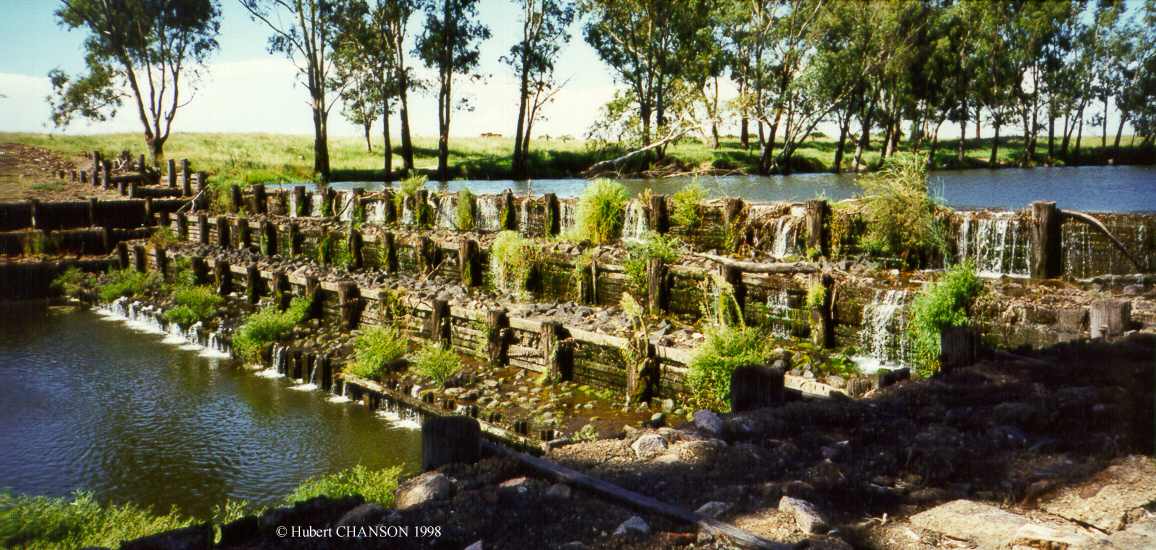
Hubert CHANSON inspected several Queensland timber crib weirs built
between 1935 and 1958. They are still in use today, and they were in
good
condition at the time of inspection.
The writer approached a number of Queensland engineers involved in
the design of timber weirs back in the 1950s and 1960s. Several people
indicated that the timber weir design followed a gradual evolution with
no structural nor hydraulic specific guidelines. In the early weirs,
railway
sleepers were used sometimes. The use of steel sheet-piles was
introduced
in the 1950s, sometimes in timber weir constrution. For example,
Greenup
weir toe was protected with steel sheet-piles.
The timber crib weirs in Queensland have had an excellent
reliability
record. Some have been in use for 80 years although 3 failure cases are
known (e.g. Bonshaw).
Overall
the construction cost of a timber dam is lower than a concrete
structure but the maintenance charges are substantial, particularly at
sites where large floods, ice and debris runs are frequent. Timber crib
weirs are porous structures and leakage is frequent. It might become
significant
but the dam porosity can be used as a mean to regulate the downstream
flow.
It can be reduced by use of geotextiles. A serious construction
consideration
is the tightening of the foundation.
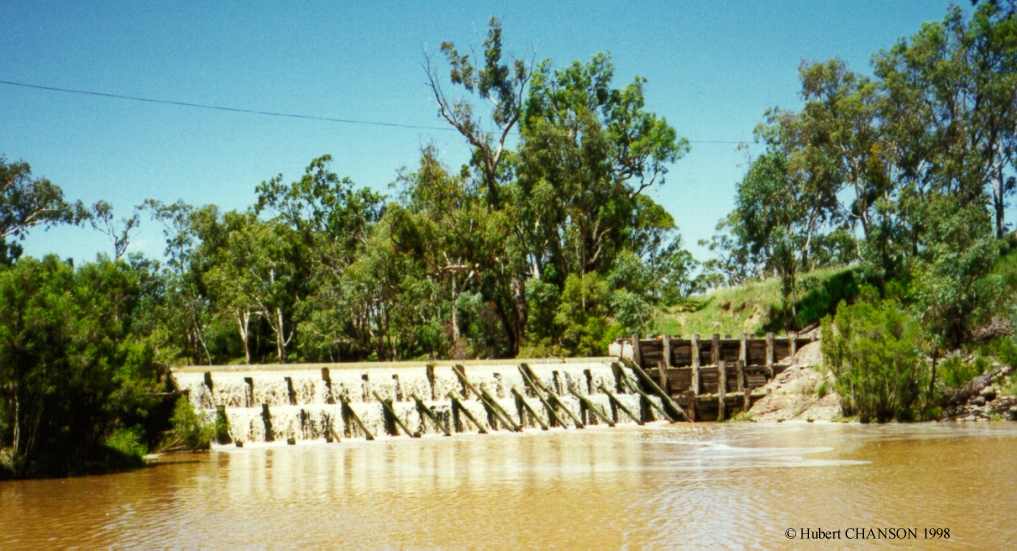
(2) Greenup weir : timber crib stepped weir (H = 5 m) on the
Macintyre
Brook, completed in 1958, upstream of Whetstone weir.
(3) Whetstone weir : timber crib stepped weir (H = 5 m) on the
Macintyre
Brook, completed in 1951. A major flood occurred in 1956, the maximum
recorded
stream height being 11.8 m at Inglewood.
(4) Cunningham weir : timber-crib stepped weir (H = 4 m) on the
Dumaresq
river, completed in 1954. During a major flood in 1956, the maximum
recorded
head-above-crest reached 7.3 m. The weir was little damaged and it is
still
in use.
(5) The Silverleaf weir was completed in 1953. The 5.1 m high timber
crib structures was refurbished in 1995. During refurbishment, an
earthfill
cofferdam was built upstream to de-water the weir. A major flood event
took place on the 7 February 1995 when the cofferdam was overtopped.
The
resulting flood wave submerged the weir. Altogether the structure was
overtopped
for 24 hours and seepage through the timber cribs lasted further 12
hours
before repairs could start. After the event, inspections showed that
the
weir sustained the
surge wave without major damage (CHANSON 2001).
The Silverleaf weir refurbishment was completed as planned and the weir
is in use since.
CHANSON, H. (1995). "
Hydraulic
Design
of
Stepped Cascades, Channels, Weirs and Spillways."
Pergamon,
Oxford, UK, Jan., 292 pages (ISBN 0-08-041918-6).
CHANSON, H. (1997). "A Short History of Stepped Cascades in Australia."
ANCOLD
Bulletin, No. 106, Aug., pp. 101-111 (ISSN 0045-0731).
CHANSON, H. (1998). "Utilisation of Stepped Channels and
Study of
Stepped Channel Flows in Australia."
Hydraulic
Characteristics
of
Stepped Channel Flows, Workshop on Flow Characteristics around
hydraulic Structures and River Environment, Nihon University, Tokyo,
Japan, November, Invited keynote lecture, 21 pages. (
PDF
Version at
EprintsUQ)
CHANSON, H. (2001). "
The
Hydraulics
of Stepped Chutes and Spillways."
Balkema,
Lisse,
The Netherlands (ISBN 90 5809 352 2).
CHANSON, H. (2002). "Timber Crib Weirs in Queensland, Australia. Some
Heritage Stuctures with a Solid Operational Record."
Royal
Historical Society of Queensland Journal, Vol. 18, No. 3, pp.
115-129
(ISSN 0085 5804). (
PDF
Version at EprintsUQ)
CHANSON, H. (2009). "Le Point du Vue de l'Ingénieur
Hydraulicien. Préface." ('The Perspective of a Hydraulic
Engineer.
Foreword.') in "
Ouvrages Bois
dans les Cours d'Eau. Etat de l'Art, Applications et Dimensionnement.
Guide Technique."
('Timber Structures in Rivers. State of the Art, Applications et
Design. Technical Handbook.') by D. ROMAN,
Office
National des
Forêts, Direction du Développement, Paris, France,
pp. 7-8 (in French). (
Record
at
UQeSpace) (
PDF
file)
CHANSON, H., YASUDA,Y., and OHTSU, I.(2000). "Flow Resistance in
Skimming
Flow : a Critical Review."
Intl
Workshop on Hydraulics of Stepped
Spillways,
Zürich, Switzerland, H.E. MINOR & W.H. HAGER Editors, Balkema
Publ., pp. 95-102 (ISBN 90 5809 135X). (download
PDF
file)
CHANSON, H., and TOOMBES, L. (2000).
"Stream Reaeration in Nonuniform
Flow: Macroroughness Enhancement.
Discussion."
Jl of Hyd. Engrg.,
ASCE, Vol. 126, No. 3,
pp. 222-224 (ISSN 0733-9429). (Download
PDF
file)
CHANSON, H., and TOOMBES, L. (2003). "Strong
Interactions between
Free-Surface Aeration and Turbulence in an Open Channel Flow."
Experimental
Thermal and Fluid Science,
Vol. 27, No. 5, pp. 525-535
(ISSN 0894-1777). (Download
PDF
File)
CHANSON, H., and GONZALEZ, C.A. (2005). "Physical
Modelling and Scale Effects of Air-Water Flows on Stepped Spillways."
Journal of Zhejiang University SCIENCE,
Vol. 6A, No. 3, March, pp. 243-250 (ISSN 1009-3095). (Download
PDF
file)
GONZALEZ, C.A., and CHANSON, H. (2004).
"Interactions between Cavity
Flow and Main Stream Skimming Flows: an Experimental Study."
Canadian
Journal of
Civil Engineering, Vol. 31, No. 1, pp. 33-44 (ISSN 0315-1468). (
Download PDF
file)
TOOMBES, L., and CHANSON, H. (2005). "Air-Water Mass
Transfer on a
Stepped Waterway."
Jl of Environ.
Engrg., ASCE, Vol. 131, No. 10, pp. 1377-1386 (ISSN 0733-9372). (
Download PDF
file)




